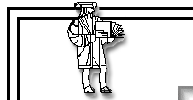 |
 |
|
Types of Fake Ancient CoinsThere are several methods forgers can use to manufacture false coins, each of which has its own problems that leave telltale signs by which they can be spotted. Clever forgers overcome some of the problems, but perfect fakes will probably never be possible. Learning the problems each type of forgery encounters is the key to detecting fakes. One must be careful as some of these methods were used by ancient counterfeiters, so one must be careful not to confuse an ancient counterfeit with a modern forgery. I will discuss each method in enough detail to allow you to understand the process and its problems. I will leaving out details that might help forgers improve their work. The basic techniques:
Nearly all fake ancient coins are made by one of these methods so sometimes combining two of them as when a cast fake is tooled to remove evidence or casting. Next page: Cast Fakes Copyright © 2016 R & T Enterprises Ltd. |